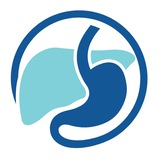The Main causes of Non-cirrhotic ascites:
1. Portal Hypertension (Non-Cirrhotic)
- Portal vein thrombosis: Blood clot in the portal vein increases portal pressure, leading to ascites.
- Splenic vein thrombosis: Can cause localized portal hypertension, often with splenomegaly.
- Schistosomiasis: Parasitic infection causing presinusoidal portal hypertension, common in endemic areas.
- Nodular regenerative hyperplasia: Abnormal liver nodule formation without fibrosis, leading to portal hypertension.
2. Malignancy-Related
- Peritoneal carcinomatosis: Cancer spread to the peritoneum (e.g., ovarian, gastric, or colorectal cancer) causes fluid exudation.
- Primary peritoneal mesothelioma: Rare cancer of the peritoneal lining.
- Lymphoma: Can obstruct lymphatic drainage, leading to ascites.
- Hepatic metastases: Extensive liver metastases can mimic portal hypertension.
3. Infectious Causes
- Tuberculosis: Peritoneal tuberculosis can cause exudative ascites, often with fever and weight loss.
- Spontaneous bacterial peritonitis: Though more common in cirrhosis, can occur in other conditions.
- Fungal or parasitic infections: Less common, but can involve the peritoneum (e.g., histoplasmosis).
4. Hypoalbuminemia
- Nephrotic syndrome: Severe proteinuria reduces serum albumin, lowering oncotic pressure and causing ascites.
- Protein-losing enteropathy: Loss of protein through the gut (e.g., in Crohn’s disease or celiac disease) leads to low albumin.
5. Lymphatic Disorders
- Chylous ascites: Leakage of lymphatic fluid into the peritoneal cavity due to lymphatic obstruction or trauma (e.g., surgery, lymphoma, or congenital lymphangiectasia).
- Lymphatic malformations: Rare congenital conditions disrupting lymphatic drainage.
6. Cardiac Causes
- Right heart failure: Elevated central venous pressure from heart failure (e.g., tricuspid regurgitation, constrictive pericarditis) leads to ascites.
- Constrictive pericarditis: Restricts heart filling, increasing venous pressure.
- Pulmonary hypertension: Can cause right-sided heart strain and ascites.
7. Renal and Endocrine Disorders
- Chronic kidney disease: Fluid overload or hypoalbuminemia from nephrotic syndrome.
- Myxedema: Severe hypothyroidism can cause ascites due to fluid retention and increased capillary permeability.
8. Pancreatic Ascites
- Leakage of pancreatic fluid into the peritoneum, often due to pancreatitis, pancreatic duct rupture, or pseudocyst rupture.
9. Biliary Ascites
- Bile leakage into the peritoneum from gallbladder or bile duct perforation (e.g., post-cholecystectomy or trauma).
10. Gynecologic Causes
- Ovarian hyperstimulation syndrome: Seen in fertility treatments, causing vascular permeability and ascites.
- Meigs syndrome: Benign ovarian tumors (e.g., fibroma) with ascites and pleural effusion, resolving after tumor removal.
11. Other Rare Causes
- Serositis: Associated with autoimmune diseases like systemic lupus erythematosus or rheumatoid arthritis.
- Eosinophilic gastroenteritis: Eosinophilic infiltration of the peritoneum.
- Endometriosis: Rarely causes hemorrhagic ascites.
- Retroperitoneal fibrosis: Can compress veins or lymphatics, leading to ascites.
Diagnostic Notes:
- Ascites fluid analysis (e.g., SAAG, serum-ascites albumin gradient) helps differentiate causes:
- SAAG ≥1.1 g/dL: Suggests portal hypertension (e.g., portal vein thrombosis).
- SAAG <1.1 g/dL: Indicates non-portal hypertension causes (e.g., malignancy, tuberculosis, nephrotic syndrome).
- Imaging (e.g., ultrasound, CT) and lab tests (e.g., albumin, cytology, culture) are critical for identifying the underlying cause.
1. Portal Hypertension (Non-Cirrhotic)
- Portal vein thrombosis: Blood clot in the portal vein increases portal pressure, leading to ascites.
- Splenic vein thrombosis: Can cause localized portal hypertension, often with splenomegaly.
- Schistosomiasis: Parasitic infection causing presinusoidal portal hypertension, common in endemic areas.
- Nodular regenerative hyperplasia: Abnormal liver nodule formation without fibrosis, leading to portal hypertension.
2. Malignancy-Related
- Peritoneal carcinomatosis: Cancer spread to the peritoneum (e.g., ovarian, gastric, or colorectal cancer) causes fluid exudation.
- Primary peritoneal mesothelioma: Rare cancer of the peritoneal lining.
- Lymphoma: Can obstruct lymphatic drainage, leading to ascites.
- Hepatic metastases: Extensive liver metastases can mimic portal hypertension.
3. Infectious Causes
- Tuberculosis: Peritoneal tuberculosis can cause exudative ascites, often with fever and weight loss.
- Spontaneous bacterial peritonitis: Though more common in cirrhosis, can occur in other conditions.
- Fungal or parasitic infections: Less common, but can involve the peritoneum (e.g., histoplasmosis).
4. Hypoalbuminemia
- Nephrotic syndrome: Severe proteinuria reduces serum albumin, lowering oncotic pressure and causing ascites.
- Protein-losing enteropathy: Loss of protein through the gut (e.g., in Crohn’s disease or celiac disease) leads to low albumin.
5. Lymphatic Disorders
- Chylous ascites: Leakage of lymphatic fluid into the peritoneal cavity due to lymphatic obstruction or trauma (e.g., surgery, lymphoma, or congenital lymphangiectasia).
- Lymphatic malformations: Rare congenital conditions disrupting lymphatic drainage.
6. Cardiac Causes
- Right heart failure: Elevated central venous pressure from heart failure (e.g., tricuspid regurgitation, constrictive pericarditis) leads to ascites.
- Constrictive pericarditis: Restricts heart filling, increasing venous pressure.
- Pulmonary hypertension: Can cause right-sided heart strain and ascites.
7. Renal and Endocrine Disorders
- Chronic kidney disease: Fluid overload or hypoalbuminemia from nephrotic syndrome.
- Myxedema: Severe hypothyroidism can cause ascites due to fluid retention and increased capillary permeability.
8. Pancreatic Ascites
- Leakage of pancreatic fluid into the peritoneum, often due to pancreatitis, pancreatic duct rupture, or pseudocyst rupture.
9. Biliary Ascites
- Bile leakage into the peritoneum from gallbladder or bile duct perforation (e.g., post-cholecystectomy or trauma).
10. Gynecologic Causes
- Ovarian hyperstimulation syndrome: Seen in fertility treatments, causing vascular permeability and ascites.
- Meigs syndrome: Benign ovarian tumors (e.g., fibroma) with ascites and pleural effusion, resolving after tumor removal.
11. Other Rare Causes
- Serositis: Associated with autoimmune diseases like systemic lupus erythematosus or rheumatoid arthritis.
- Eosinophilic gastroenteritis: Eosinophilic infiltration of the peritoneum.
- Endometriosis: Rarely causes hemorrhagic ascites.
- Retroperitoneal fibrosis: Can compress veins or lymphatics, leading to ascites.
Diagnostic Notes:
- Ascites fluid analysis (e.g., SAAG, serum-ascites albumin gradient) helps differentiate causes:
- SAAG ≥1.1 g/dL: Suggests portal hypertension (e.g., portal vein thrombosis).
- SAAG <1.1 g/dL: Indicates non-portal hypertension causes (e.g., malignancy, tuberculosis, nephrotic syndrome).
- Imaging (e.g., ultrasound, CT) and lab tests (e.g., albumin, cytology, culture) are critical for identifying the underlying cause.
EASL-guidelines-May-2025.pdf
2.7 MB
EASL Update 2025 : chronic hepatitis B infection
